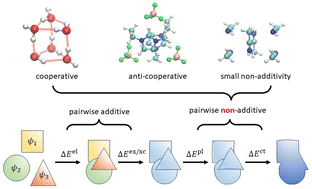In this paper, we combine an energy decomposition analysis (EDA) scheme with many-body expansion (MBE) to develop a MB-EDA method to study the cooperative and anti-cooperative effects in molecular cluster systems. Based on the target state optimization self-consistent field (TSO-SCF) method, the intermolecular interaction energy can be decomposed into five chemically meaningful terms, i.e., electrostatic, exchange, polarization, charge transfer and dispersion interaction energies. MB-EDA can decompose each of these terms in MBE. This MB-EDA has been applied to 3 different cluster systems: water clusters, ionic liquid clusters, and acetonitrile-methane clusters. This reveals that electrostatic, exchange, and dispersion interactions are highly pairwise additive in all systems. In water and ionic liquid clusters, the many-body effects are significant in both polarization and charge transfer interactions, but are cooperative and anti-cooperative, respectively. For acetonitrile-methane clusters, which do not involve hydrogen bonds or charge–charge Coulombic interactions, the many-body effects are quite small. The chemical origins of different many-body effects are deeply analyzed. The MB-EDA method has been implemented in Qbics (https://qbics.info) and can be a useful tool for understanding the many-body behavior in molecular aggregates at the quantum chemical level of theory.
